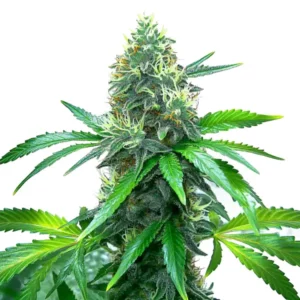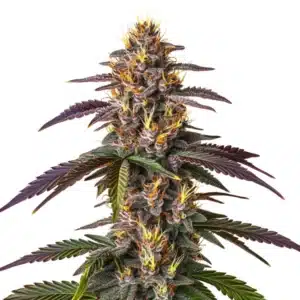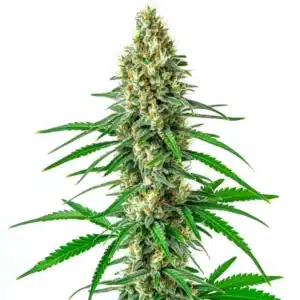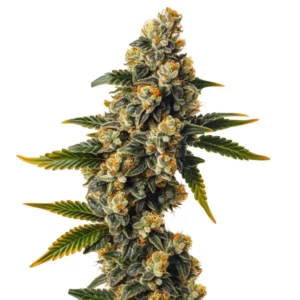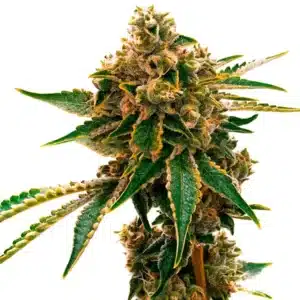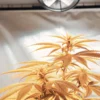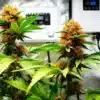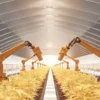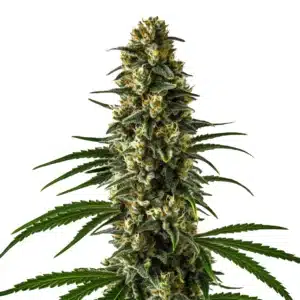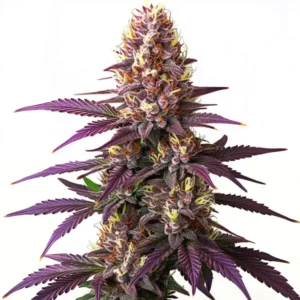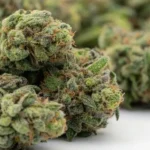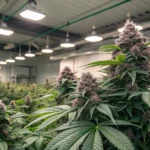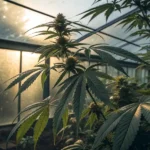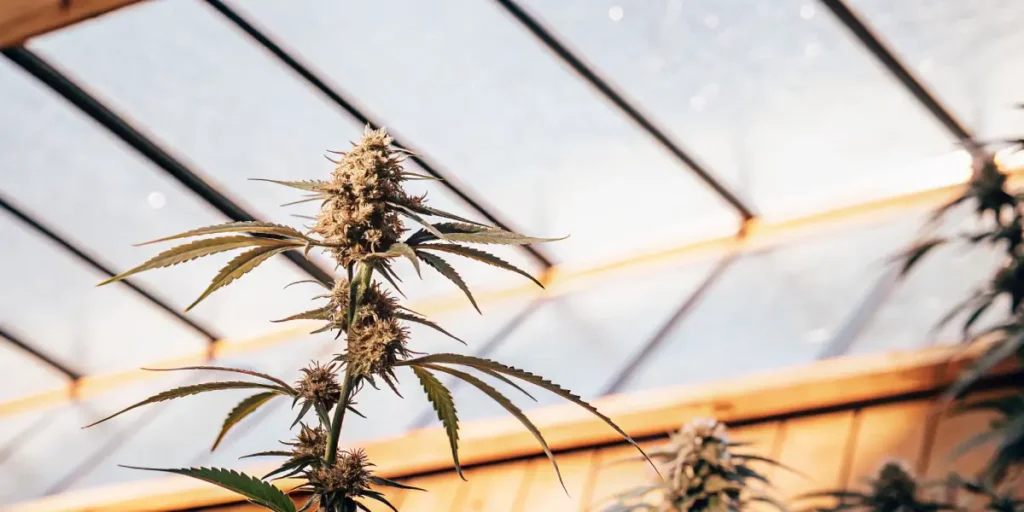
Lateral Bud Development in Cannabis
Lateral bud development in cannabis can significantly impact the yield and quality of your harvest. These buds grow on the sides of the plant’s main stem, and when properly nurtured, they can produce abundant and high-quality flowers. For both first-time cannabis seed buyers and seasoned growers, knowing how these buds develop is crucial.
Many factors affect lateral bud development in cannabis, from genetics to environmental conditions. The right approach can lead to a more robust plant structure and higher yields. When you choose seeds from reputable sources like Blimburn Seeds you set the stage for optimal growth.
Recommended Strains
By focusing on lateral bud formation techniques in cannabis, growers can enhance the overall performance of their plants. Techniques such as pruning, topping, and training can help maximize the potential of these lateral buds. Let’s delve into these methods and explore how they can benefit your cannabis cultivation.
Lateral Bud Formation Techniques in Cannabis
One of the most effective lateral bud formation techniques in cannabis is topping. This involves cutting off the top of the main stem to encourage the plant to grow more side branches. This not only increases the number of lateral buds but also creates a bushier plant.
Another technique is low-stress training (LST), where growers gently bend and tie down the plant’s branches. This method allows more light to reach the lower parts of the plant, promoting lateral bud growth. Both of these methods can be applied to strains like Gelato, available at Blimburn Seeds.
Besides to topping and LST, super cropping is another technique that can enhance lateral bud development in cannabis. This method involves slightly damaging the plant’s stems to trigger a healing response, which can result in stronger branches and more prolific bud growth. Super cropping, when done correctly, can lead to a more resilient plant structure.
Knowing the timing and execution of these lateral bud formation techniques in cannabis is essential. Each method has specific stages during the plant’s growth cycle when it is most effective. By incorporating these techniques at the right time, growers can significantly increase their chances of a successful harvest with abundant lateral buds.
Practical Examples of Topping
When you top a cannabis plant, you’re essentially telling it to stop focusing on vertical growth and start spreading out. For instance, if you have a Blue Dream plant, you might notice that after topping, the plant produces two or more main colas instead of one.
For first-time growers, it’s essential to time the topping correctly. Wait until the plant has developed at least 4-5 nodes before making the cut. This ensures the plant is strong enough to handle the stress and encourages healthy lateral bud development in cannabis.
After a successful topping, observe how the plant adapts to its new growth pattern. The increase in lateral branches will not only enhance the plant’s ability to capture light but also improve airflow throughout the canopy. This setup is conducive to optimizing lateral bud growth cannabis, which is key to achieving a high yield.
As the plant matures, the new growth tips will become sites for future buds, providing a more prolific flowering stage. This practical application of topping, combined with favorable environmental conditions, contributes to the overall health and productivity of the cannabis plant.
Promos & Deals
Optimizing Lateral Bud Growth Cannabis
Optimizing lateral bud growth in cannabis requires attention to several factors, including light, nutrients, and environmental conditions. Adequate lighting is crucial, as cannabis plants need sufficient light to thrive. Position your grow lights to cover the entire plant evenly, ensuring all lateral buds receive ample light.
Nutrient management also plays a vital role. A balanced diet of nitrogen, phosphorus, and potassium, along with micronutrients, supports healthy lateral bud development. Strains like Gorilla Glue 4 from Blimburn Seeds thrive when given the right nutrient mix.
Regular environmental monitoring can further enhance lateral bud yield in cannabis. Consistently checking temperature, humidity, and light exposure ensures that the plant remains in an optimal state for growth. Adjusting these parameters based on the plant’s specific needs during different growth phases is a critical step in optimizing lateral bud growth cannabis.
Moreover, integrating technology such as automated climate control systems can assist in maintaining a stable environment. This approach reduces human error and ensures that conditions remain ideal for the entire growth cycle, ultimately supporting superior lateral bud development in cannabis.
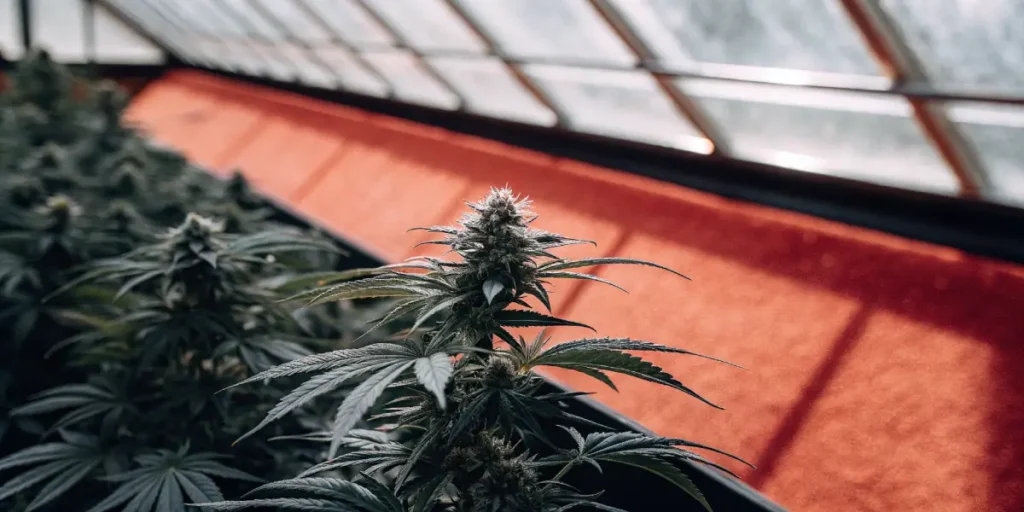
Light and Nutrient Management
Light is the driving force behind photosynthesis, which fuels plant growth. For indoor growers, using adjustable LED lights can help optimize light exposure. Adjust the height and angle of your lights to make sure all parts of the plant, including the lower branches, receive light.
When it comes to nutrients, over-fertilizing can harm lateral bud development. Stick to a feeding schedule and use products designed for cannabis. Organic fertilizers can also be beneficial, providing a steady release of nutrients over time.
Knowing the specific nutrient needs of your chosen cannabis strain is vital. Different strains may require varying nutrient ratios to achieve the best results in lateral bud development in cannabis. Conducting soil tests or using nutrient solution kits can help ensure that your plants are receiving the proper nutrition.
Light management should also be tailored according to the growth stage. During the vegetative phase, more intense light can promote vigorous growth, while during the flowering stage, adjusting light cycles to 12/12 can trigger and enhance lateral bud yield in cannabis. This strategic approach helps maximize the plant’s potential at each stage.
Cannabis Plant Lateral Bud Pruning Methods
Pruning is a key component in managing lateral bud development in cannabis. By removing unnecessary leaves and branches, you can direct the plant’s energy towards producing healthy buds. This not only improves air circulation but also reduces the risk of mold.
Selective pruning involves removing specific parts of the plant to encourage growth in other areas. For example, cutting away small or underdeveloped branches allows the plant to focus on the stronger, more productive buds. This is particularly effective with strains like OG Kush from Blimburn Seeds.
Cannabis plant lateral bud pruning methods also include techniques like lollipopping, where lower growth is removed to concentrate energy on the top buds. This method is especially useful for indoor growers who want to maximize the efficiency of their grow space and ensure that light is focused on the most productive parts of the plant.
Pruning should be seen as a continual process, with regular checks to determine which parts of the plant need attention. The goal is to maintain a balance between growth and pruning to avoid over-stressing the plant, which can otherwise hinder lateral bud development in cannabis.
How to Prune Effectively
Start pruning your cannabis plants once they’ve established a solid growth foundation. Use clean, sharp scissors to make precise cuts, minimizing stress and damage to the plant. Focus on removing any yellowing or damaged leaves first.
As the plant grows, continue to prune lower branches that don’t receive much light. This encourages upward and outward growth, enhancing the development of lateral buds. Always be cautious not to over-prune, as this can stunt the plant’s growth.
In addition to basic trimming, consider the timing of your pruning activities. Pruning early in the plant’s life cycle allows it to recover and redirect its energy towards lateral bud development in cannabis. This strategic timing helps in shaping the plant for optimal light exposure and airflow.
Monitoring the plant’s response post-pruning is crucial. If the plant shows signs of stress, such as wilting or slowed growth, it may be necessary to adjust your pruning strategy. The ultimate aim is to create a healthy structure that supports abundant lateral buds and enhances the overall quality of the harvest.
Factors Affecting Lateral Bud Development Cannabis
Several factors can impact lateral bud development in cannabis, including genetics, environment, and grower techniques. Choosing high-quality seeds from Blimburn Seeds is the first step towards successful cultivation.
Environmental conditions such as temperature, humidity, and airflow also play crucial roles. Maintaining a stable environment helps prevent stress, which can negatively affect bud growth.
Understanding the interaction between these factors and lateral bud development in cannabis is key to achieving optimal results. For instance, certain environmental stresses, like slight drought conditions, can encourage the plant to focus on reproductive growth, thereby enhancing lateral bud yield in cannabis.
Growers should also consider the impact of external factors such as pests and diseases. Implementing preventive measures, such as using organic pesticides or beneficial insects, can protect the plant and support consistent lateral bud development throughout the growth cycle.
Genetic Influence and Environmental Control
Genetics largely dictate a cannabis plant’s growth pattern. Some strains naturally produce more lateral buds than others. For example, sativa-dominant strains often grow taller with more side branches, while indica strains tend to be bushier.
Controlling environmental factors is essential for optimizing growth. Keep temperatures between 70-85°F during the day and slightly cooler at night. Humidity levels should be around 40-60% to reduce the risk of mold.
Besides to temperature and humidity, soil composition and water quality are critical factors affecting lateral bud development in cannabis. Utilizing high-quality soil or hydroponic solutions tailored to cannabis can promote healthier root systems and better nutrient uptake, which supports robust bud growth.
It’s also important to recognize that genetic predisposition does not solely determine growth outcomes. The combination of controlled environmental conditions and informed grower techniques can amplify the potential of the plant’s genetic traits, leading to enhanced lateral bud yield in cannabis.
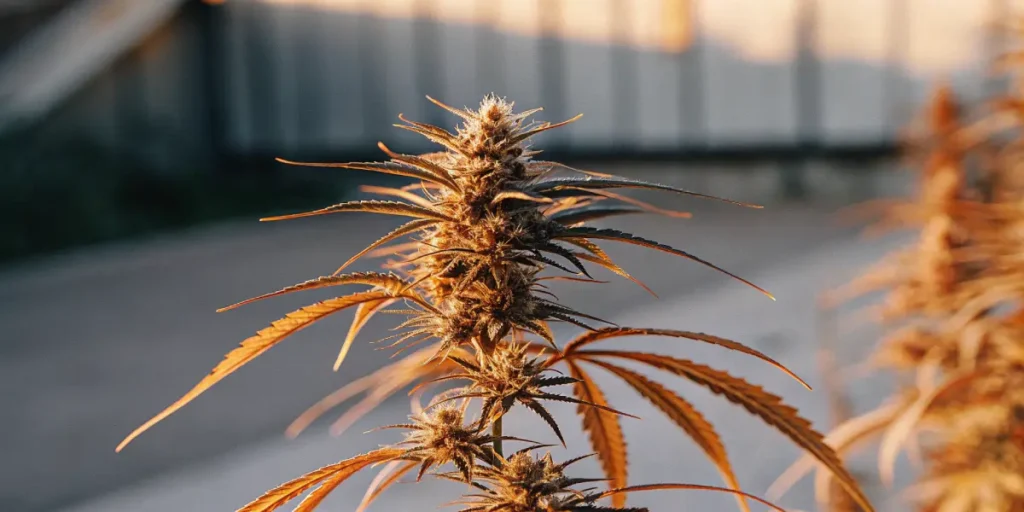
FAQs on Lateral Bud Development in Cannabis
What is the best time to start pruning cannabis plants?
The ideal time to start pruning your cannabis plants is during the vegetative stage. This is when the plant is actively growing and can quickly recover from cuts. Start by removing any dead or yellowing leaves and focus on shaping the plant.
Pruning during the flowering stage should be done with caution. While some growers choose to prune lightly to improve light penetration, it’s crucial not to stress the plant too much during this phase. Always ensure your tools are clean to prevent infection.
For successful pruning, understanding the specific growth cycle of your cannabis strain is essential. Certain strains may have different vegetative durations, affecting when the optimal pruning window occurs. Tailoring your approach can improve lateral bud development in cannabis.
Additionally, monitoring environmental factors before and after pruning can aid in minimizing plant stress. Ensuring that light, temperature, and humidity are optimal will facilitate a smoother recovery post-pruning, contributing to overall plant health and productivity.
How do I ensure even light distribution for lateral buds?
To ensure even light distribution, arrange your grow lights to cover the entire canopy evenly. Consider using reflective surfaces to maximize light efficiency. This setup ensures that all parts of the plant, including lateral buds, receive adequate light.
Regularly rotate your plants if possible. This allows different sides of the plant to receive direct light exposure, promoting uniform bud development. Adjust the height of your lights as the plants grow to maintain optimal light intensity.
Incorporating light meters into your cultivation setup can provide precise measurements of light intensity across the canopy. This data-driven approach allows for fine-tuning of light positioning, ensuring that all lateral buds receive equal exposure, which is crucial for optimizing lateral bud growth cannabis.
Moreover, using supplemental side lighting can address areas of the plant that are hard to reach with overhead lights alone. This extra light can significantly boost lateral bud development in cannabis by promoting growth in the lower and interior sections of the plant.
Can I use natural fertilizers to boost lateral bud growth?
Natural fertilizers can be very effective in boosting lateral bud growth. Organic options like compost, worm castings, and bat guano provide a slow release of nutrients, which can enhance bud development over time.
Additionally, natural fertilizers improve soil health and microbial activity, which supports overall plant growth. When using natural fertilizers, be mindful of their nutrient concentrations to avoid over-fertilization.
Integrating natural fertilizers with a well-structured feeding schedule can optimize nutrient availability throughout the plant’s growth phases. This approach not only supports lateral bud development in cannabis but also enhances the flavor and aroma of the final product.
It’s advisable to periodically evaluate the soil’s nutrient composition to ensure that the natural fertilizers are meeting the plant’s needs. Adjustments can be made based on these insights, allowing growers to maintain an ideal environment for enhancing lateral bud yield in cannabis.
What environmental conditions favor lateral bud development?
Stable environmental conditions are crucial for lateral bud development. Maintain consistent temperatures between 70-85°F and humidity levels around 40-60%. These conditions help prevent stress and promote healthy growth.
Good air circulation is also essential. Use fans to create a gentle breeze, which strengthens stems and prevents mold. Ensure that your grow space is clean to reduce the risk of pests and diseases, which can negatively impact bud growth.
Beyond basic environmental control, implementing a structured monitoring system can aid in maintaining conditions that favor lateral bud development in cannabis. Regular checks on temperature, humidity, and airflow can help identify potential issues before they impact plant health.
Advanced techniques such as using CO2 enrichment can further enhance growth by boosting photosynthesis, leading to more vigorous lateral bud formation techniques cannabis. This is particularly effective in sealed grow environments where airflow and gas exchange can be tightly regulated.
How do genetics influence lateral bud development?
Genetics play a significant role in determining a plant’s growth pattern and bud development. Some strains are naturally more inclined to produce lateral buds due to their genetic makeup. Selecting strains known for robust lateral growth, such as those from Blimburn Seeds, can enhance your results.
When choosing seeds, consider your cultivation goals and the environment in which you’ll grow. Some strains may perform better indoors, while others thrive outdoors. Tailoring your choice to your specific conditions can lead to better lateral bud development and higher yields.
Besides to choosing the right strains, understanding the specific growth characteristics of your selected genetics can inform your cultivation strategy. Some strains may require specific nutrient profiles or environmental conditions to fully express their potential for lateral bud development in cannabis.
Experimentation with different strains and growing techniques can provide valuable insights into which genetic profiles perform best under your particular conditions. This ongoing process of refinement and adaptation can significantly boost the overall quality and yield of your cannabis crops.



